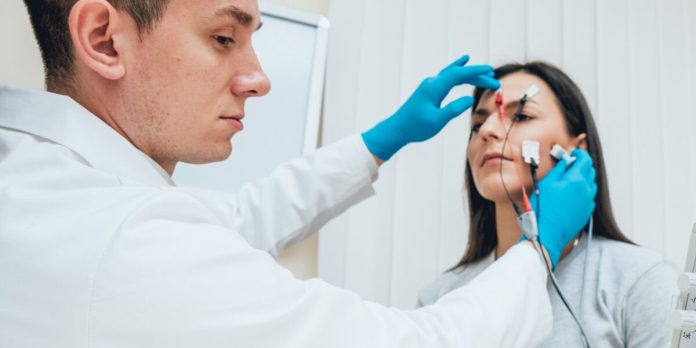Electroconvulsive therapy (ECT; shock treatment) is a standard psychiatric treatment in which seizures are electrically induced in patients to provide relief from psychiatric illnesses. It is often used to treat individuals suffering from severe depression. Neurologists know that depression affects the brain; however, they do not know why some individuals respond to ECT while others do not. Researchers in the UCLA Department of Neurology conducted a study to determine which patients would benefit from ECT.
The investigators have shown for the first time in a large group of patients that ECT alters certain areas of the brain that play a role in how individuals feel, learn, and respond to positive and negative environmental factors. They took images of the hippocampus and amgydala in patients before, during, and after undergoing ECT; those images were compared to healthy control subjects. The research team also demonstrated that the hippocampus changes, or increases in size and how those changes correlated with improved mood in patients with major depression and indicated how well they were responding to treatment. In addition, using state-of-the-art methods to assess brain shape, the researchers showed that parts of these structures change more with treatment; thus, providing vital clues to how the connections in the brain may be used to select for patients who will respond well to treatment.
Senior author Katherine L. Narr, PhD, an associate professor of neurology, explained that the procedure they developed would also spare those patients who will not respond from months of taking drugs that ultimately will not work for them. She noted, “Major depression is common, affects all ages, races, and ethnic groups, and has a serious consequence on people’s family lives and work. People with depression also are at higher risk for suicide, which accounts for more deaths than car accidents, natural disasters, and war each year on average. Unfortunately, standard types of medication used to treat major depression take a long time to work, and for at least a third of people, the medication will not work well enough to provide any real help.”
First author Shantanu H. Joshi, PhD, an assistant professor of neurology, explained that ECT has been used for the treatment of depression and other psychiatric disorders for more than 50 years, and the treatment is associated with it a certain stigma. However, within the last decade, advances in anesthesia, electrical stimulation equipment, and new evidence about electrode lead placement have improved safety and reduced side effects. She said, “ECT has been shown to be very effective for treating patients with major depression who don’t respond well to other treatments. During the treatment course, ECT leads to plastic changes in the brain that are linked with improvements in mood. Specifically, we saw the hippocampus and amygdala, important for memory and emotion, are shown to increase in size. People with smaller hippocampal size prior to starting treatment are less likely to respond as well to treatment. While our research investigates structural neuroplasticity in depression in response to ECT, our findings are considered to be of much broader interest to the field.” In addition to ECT, the researcher expects that the effects shown would extend to more standard, less rapidly acting antidepressant treatments and could be used to predict patient response.
For the study, the investigators imaged 43 patients undergoing ECT at three time points, before beginning treatment, after the second ECT session, and within one week of completing treatment; the study comprised a total of 129 brain scans. They also imaged 32 healthy controls twice, and compared those images to the ECT patients.
Dr. Narr notes that major depression affects 350 million people each year and results in significant personal suffering, loss of productivity; in addition, it is a burden to family, the healthcare system and the economy. Determining better ways to select patients for treatments that will alleviate their symptoms would go a long way to reducing that suffering.















